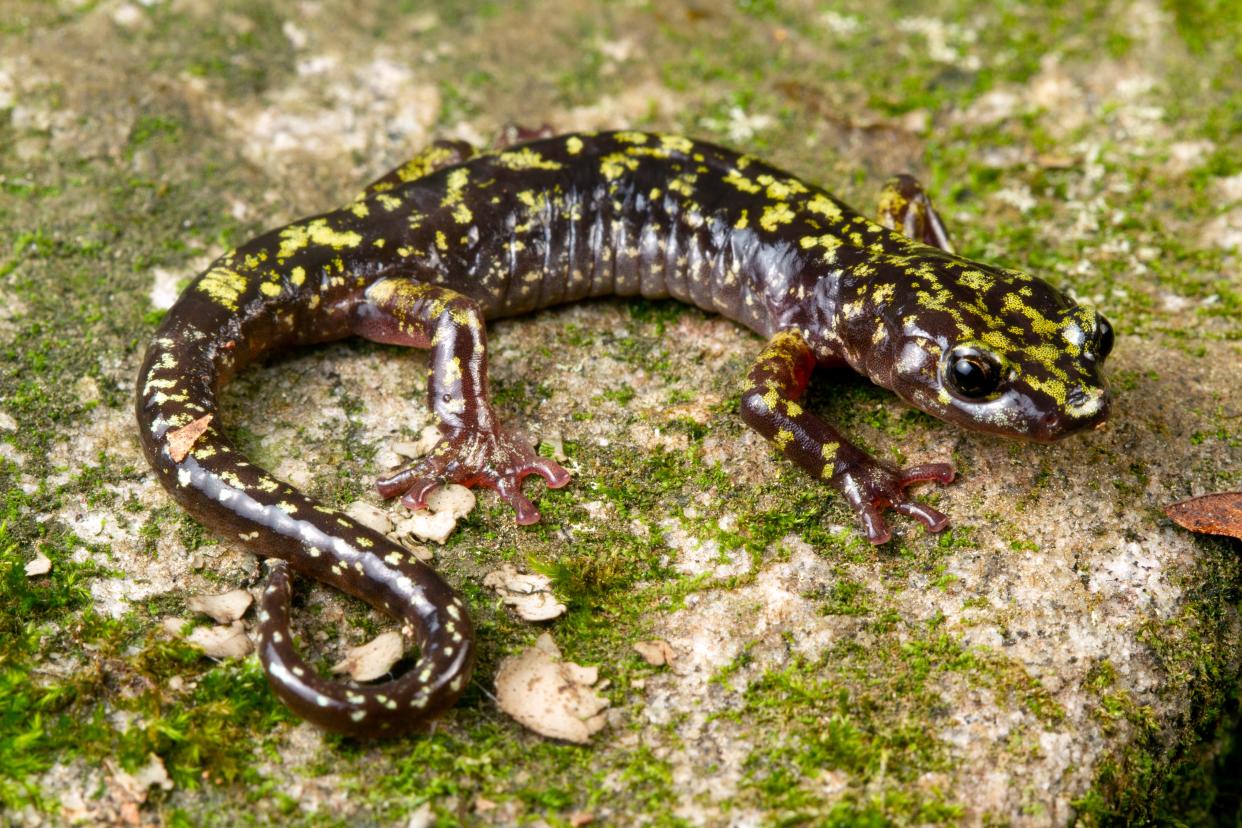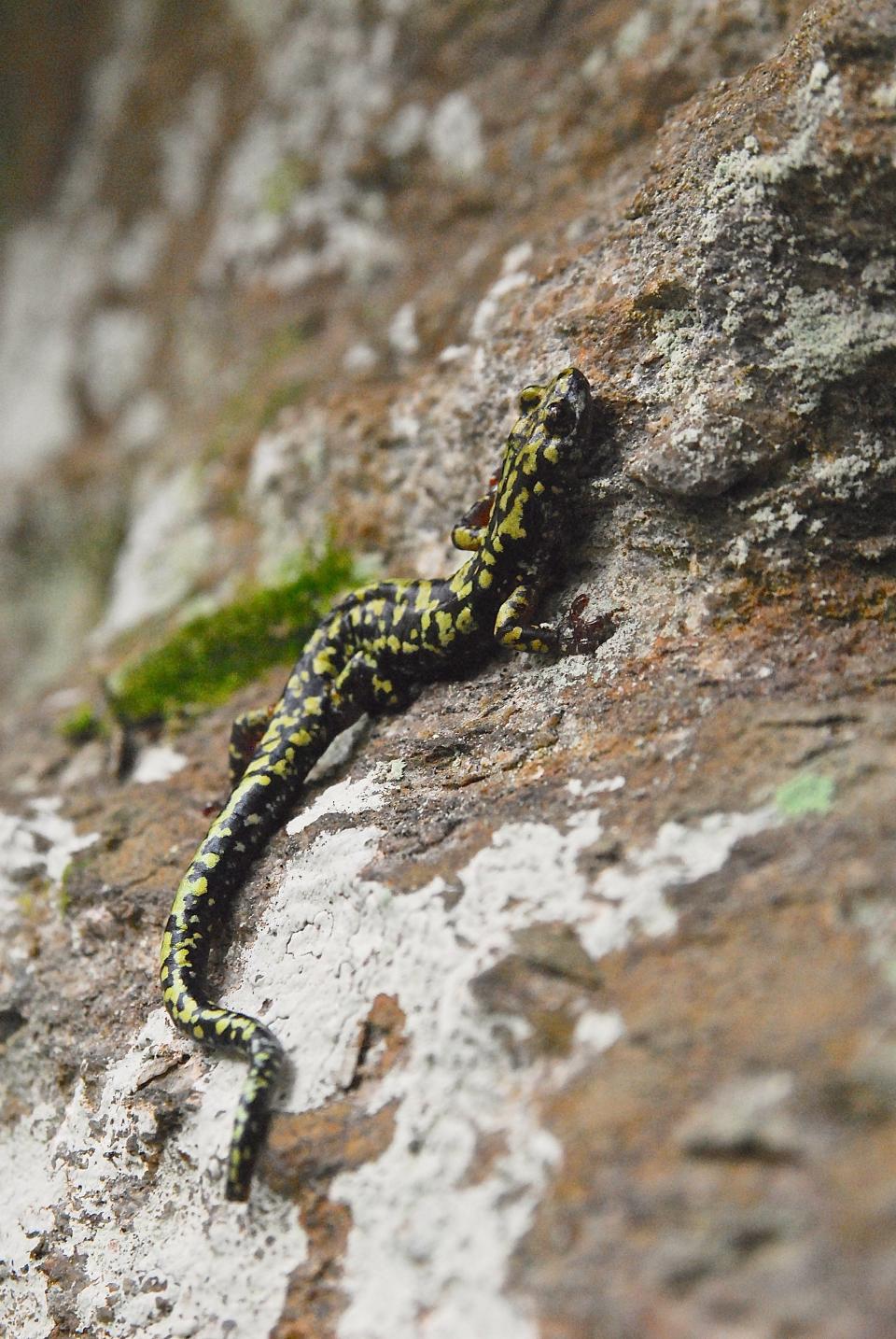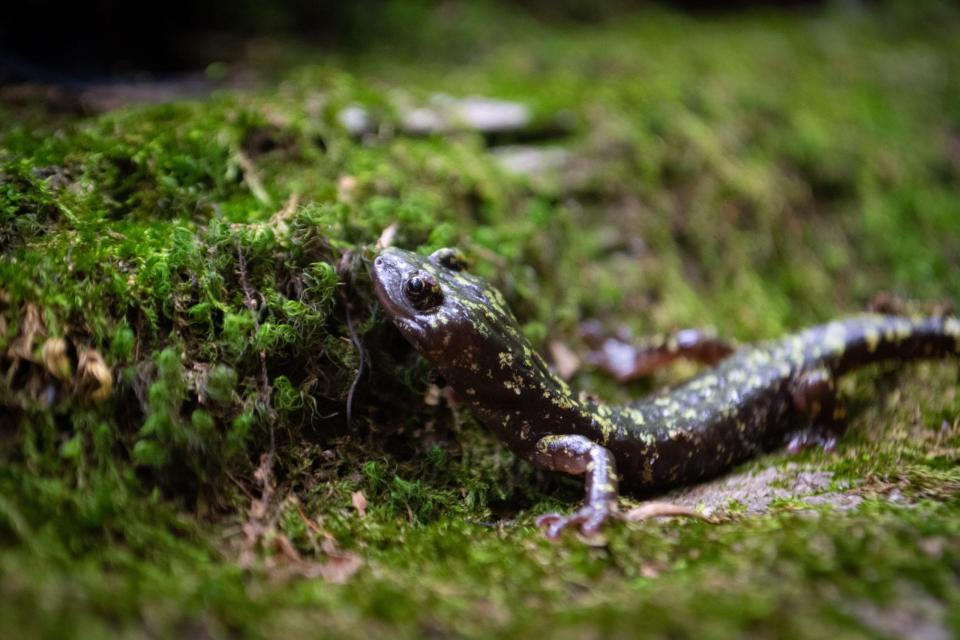WNC conservationists seek federal protection for native Hickory Nut Gorge salamander

ASHEVILLE - The Hickory Nut Gorge green salamander is endemic to the Hickory Nut Gorge, a 14-mile forested chasm straddling the Western North Carolina counties of Henderson, Rutherford and Polk. Nowhere else on earth does this salamander exist in nature, according to local biologists.
Black with luminous green splotches, it breathes without lungs and can crawl up just about anything. The salamanders favor open rock faces and crevices, with mothers returning to the same craggy spot every year to lay eggs.
In 2019, researchers first identified the Hickory Nut Gorge green salamander as a genetically distinct species, one that split from traditional green salamanders around 10 to 12 million years ago. Now, a few years after this discovery, the Hickory Nut Gorge green salamander is in danger of disappearing.
Residential and commercial development southeast of Asheville has carved into the salamander’s habitat, conservationists say, dwindling their numbers to as few as 200 today. To reverse this trend and save this species, some are pushing to get the Hickory Nut Gorge green salamander some added protection.

Related: Chestnut Hills in Hickory Nut Gorge preserves unlogged forest, scenic views, rare habitat
Related: New hiking trail in Hickory Nut Gorge connects Bearwallow and Wildcat Rock trails
Getting on Endangered Species list
On June 13, two conservationist nonprofits — the Center for Biological Diversity and the Defenders of Wildlife — petitioned the U.S. Department of the Interior to protect the Hickory Nut Gorge green salamander under the federal Endangered Species Act.
Animals covered by the Endangered Species Act, cannot have their habitats destroyed unless developers receive a special federal permit and draft a habitat conservation plan.

“(The Hickory Nut Gorge green salamander) has been clinging to those gorge walls for 12 million years, but its only hope of hanging on is if we all rally and take some simple easy steps,” said Will Harlan, a senior scientist with the Center for Biological Diversity, who lives north of Asheville.
Securing federal protection would also mean governmental agencies would have to make efforts to increase the salamander population through adding habitat.
More: Synchronous fireflies shine in Smoky Mountains
Salamander Capital of the World
Western North Carolina is a salamander haven. To the west, the Great Smoky Mountains Nation Park has been called the Salamander Capital of the World. Statewide, there are 64 different species of this crawling amphibian.
But the Hickory Nut Gorge salamander holds a special place in some researchers' hearts.
“I’m always intrigued by rare things and things that are extremely specialized,” said Asheville-based J.J. Apodaca, who was part of the team that identified the Hickory Nut Gorge salamander as a species in 2019. “And they’re extremely specialized in this one special place.”
More: WNC Nature Center Notes: Salamander Species Special

Apodaca explained the Hickory Nut Gorge acts like an island secluding its native salamander from the outside world. These green salamanders are content to stay within the gorge, where dense forest canopies offer climbing opportunities and higher rainfall levels keep their skin moist.
Why the public should care about the fate of this newly-discovered salamander can be a tricky question, Apodaca acknowledged, but he gave a simple answer.
“They have a right to be there, and we should respect that,” he said. “They’re this awesome symbol of North Carolina, and it’s our own unique species right here.”
Brian Gordon is a statewide reporter with the USA Today Network in North Carolina. Feel free to email him at bgordon@gannett.com or follow him on Twitter @skyoutbriout
This article originally appeared on Asheville Citizen Times: Federal protection sought for Hickory Nut Gorge green salamander

